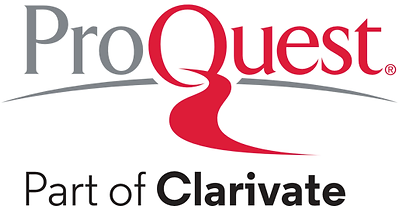Radiation-Induced Processes in Commercially Available Samples of Activated Carbon Under the Influence of Gamma- and Beta-Radioactivity
| Authors | H.V. Vasylyeva1, I.F. Mironyuk2, A.V. Vasyliev1, O. Savka1, 3 , M.M. Pop1, V.Yu. Lazur1, K.V. Skubenych1 |
| Affiliations |
1Uzhhorod National University, 88000 Uzhhorod, Ukraine 2Vasyl Stefanyk Precarathian National University, 76018 Ivano-Frankivsk, Ukraine 3Municipal Non-Profit Enterprise "Zakarpattia Antitumor Center" of Zakarpattia Regional Council, 88000 Uzhhorod, Ukraine |
| Е-mail | h.v.vasylyeva@hotmail.com |
| Issue | Volume 17, Year 2025, Number 3 |
| Dates | Received 05 April 2025; revised manuscript received 23 June 2025; published online 27 June 2025 |
| Citation | H.V. Vasylyeva, I.F. Mironyuk, A.V. Vasyliev, et al., J. Nano- Electron. Phys. 17 No 3, 03028 (2025) |
| DOI | https://doi.org/10.21272/jnep.17(3).03028 |
| PACS Number(s) | 80.81.82.*84. + r.01.55 + b |
| Keywords | Activated carbon, Gamma- and beta-irradiation, Raman spectroscopy (18) , Na-EDTA. |
| Annotation |
Commercially available adsorbents, based on activated carbon, are often used to purify water solutions from organic pollutants, dyes, heavy metal ions, and radionuclides. Therefore, the investigations of radiation-induced processes in carbon adsorbents are relevant. This work investigates the effect of gamma- and beta-radiation on activated carbon's structure and adsorption properties. The commercially available activated carbon samples were irradiated by a linear accelerator, Halsyon Varian, and a 90Sr-90Y source, Sirius, in the air atmosphere and acidic and neutral water solutions. The adsorption characteristics of irradiated and non-irradiated carbon toward Na-EDTA molecules were studied. The Raman spectrometry was used to control the radiation-induced change in the carbon structure. The Raman spectra were fitted using fityk-1.3.1-setup.exe software. The maximum adsorption of Na-EDTA molecules by non-irradiated AC reaches 800 mg/g. Irradiation with beta- and gamma radioactivity in the air atmosphere does not affect the adsorption capacity of activated carbon, which is also capable of adsorbing the Na-EDTA complex with strontium ions. During irradiation of AC in the presence of water molecules on the surface, the –C–O–C– groups, aromatic rings, and carboxylic acid dimers form on the surface of AC, which lead to maxima of about 810 cm – 1, 990–1100 cm – 1, and 910–960 cm – 1 on the Raman spectrum of AC. Fitting spectrum using program fityk-1.3.1-setup.exe shows that these transformations of the activated carbon surface involve mainly sp3-hybridized atoms. Irradiation of activated carbon in this way negatively affects the adsorption capacity. However, this effect requires further research. |
|
List of References |
Other articles from this number
1) Electrical and Photoelectrical Properties of ZnFe2O4/InSe Heterojunctions [03001-1-03001-4]2) Design, Fabrication and Measurements of a Single-Layer X-Band Miniaturized Patch Antenna with Metasurface for 0.5U and 1U CubeSat Missions [03002-1-03002-10]
3) Microstructure and Morphological Properties of Granulated Mg3Sb2 Thermoelectric Material [03003-1-03003-7]
4) Green Synthesis of ZnO Nanoparticles Using Leaf Extracts, their Characterization and Antimicrobial Applications [03004-1-03004-10]
5) Design and Performance Improvement of a 3.5 GHz Elliptical Patch Antennafor 5G Sub-6 GHz/WiMAX Applications [03005-1-03005-6]
6) Ellipsometric and Maxwell-Garnett Model Studies of Silicon Nitride-based Bilayer Structures Elaborated by LPCVD [03006-1-03006-5]
7) Design, Fabrication and Measurements of an X-Band Cross-Patch Antenna with Metasurface for Advanced LEO CubeSat Missions [03007-1-03007-12]
8) Nanotechnology Driven Advanced Imaging and Classification of Brain Tumours [03008-1-03008-5]
9) Compact Semicircle CSRR- Loaded Antenna for Triband Applications [03009-1-03009-5]
10) Analysis of Performance Parameter of Hexagonal Coil Structure for Wireless Power Charging in Electric Vehicle [03010-1-03010-5]
11) Design and Analysis of a Notched Super Wide Band Antenna for Wireless Communication [03011-1-03011-5]
12) Reduction of Common-Mode Voltage Using Novel T-Type Multilevel Inverter for EV Application [03012-1-03012-5]
13) A Meta Surface Based Patch Antenna for Wireless Space Craft 5G Communication Systems [03013-1-03013-5]
14) Graphene Nanoribbon Based Asymmetric Tunnel FET for Fast Switching and Low Power Applications [03014-1-03014-5]
15) Massive MIMO Signal Detection Using Cascaded OQRD-PMD Method [03015-1-03015-6]
16) Design of a Compact Vivaldi Antenna for Wearable Tactical Applications [03016-1-03016-4]
17) Low-Profile Tapered Slot Antenna for Wearable Military Applications [03017-1-03017-4]
18) Optimized Dual Coupling PIFA for Low SAR Smartphone and Wearable Applications [03018-1-03018-4]
19) Design of Efficient Miniaturized Printed Monopole Antenna for Short-Range Wireless Applications [03019-1-03019-5]
20) Quantum Computing Approaches to Autonomous Mobile Robots and Multi-Machine Systems: A Perspective on Design Automation [03020-1-03020-6]
21) A Circular CPW Fed Patch Antenna with an L-Shape and Two Semi-Circular Shaped Slots for L, Ku and K-Bands [03021-1-03021-4]
22) DFT Performance Analysis of Graphene Nanoribbon FET with Gate Stack for Low Power Applications [03022-1-03022-5]
23) Forecasting Dielectric Behavior of Nano-Epoxy Materials through AI-based Electronic Properties [03023-1-03023-5]
24) Novel Model for Classifying the Toxicity of Metal Oxide Nanoparticles [03024-1-03024-6]
25) Dynamics and Optimization of Physical Processes in Information Systems Using Autonomous Mobile Robots and Multi-Agent Systems [03025-1-03025-6]
26) Automated Classification of Carbon Nanomaterial Structures based on Computer Vision Model [03026-1-03026-6]
27) Dynamic Optimization of Non-Equilibrium Processes in Nanostructures for High-Performance Applications [03027-1-03027-5]
28) Enhancing Concentrated Solar Photovoltaic (CSPV) Efficiency through Co-Doped ZnO Window Layers and Bi-As Infused GaSb Substrates [03029-1-03029-9]
29) Theoretical and Experimental Study of a Human Inner Ear Implant with an Ultrasonic Communication Line [03030-1-03030-7]
30) Thermoresistive Properties of Graphite Films [03031-1-03031-4]
31) Percolation Behavior of Electrical Conductivity of Polylactic Acid-Based Nanocomposites [03032-1-03032-6]
32) Structural and Optical Properties of Polystyrene CdS Nanocomposite Prepared by a Soft Chemistry Method [03033-1-03033-5]
33) Influence of Pulsed Current Parameters on the Structure Formation of Amorphous Co-W Alloys and their Thermal Stability [03034-1-03034-5]
34) First-Principles Calculation Investigations of Bandgap Bowing Parameters, Electronic and Optical Properties of Cd1 – xZnxTe, Cd1 – xZnxSe and Cd1 – xZnxS Semiconductors Alloys [03035-1-03035-7]
35) Reconfigurable Truncated E-Shape Electromagnetic Gap-Coupled Antenna with Air Gap and Switch Configurations for Wideband Wireless Applications [03036-1-03036-6]
36) Recovering Data for Free Induction Decay Signal for MRI Reconstruction with Interpolation [03037-1-03037-6]
37) Novel Hybrid Approaches for Occupancy Prediction Using Temperature, Light and CO2 Level Supporting Electrical Energy Management [03038-1-03038-6]






